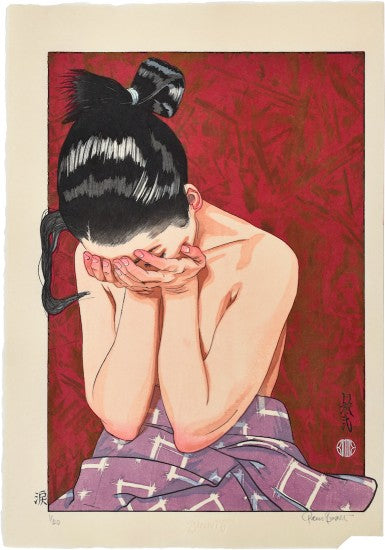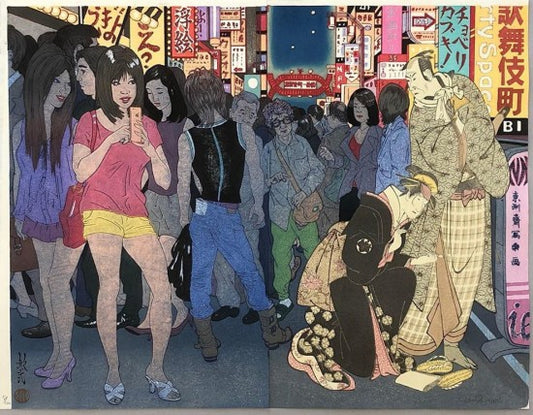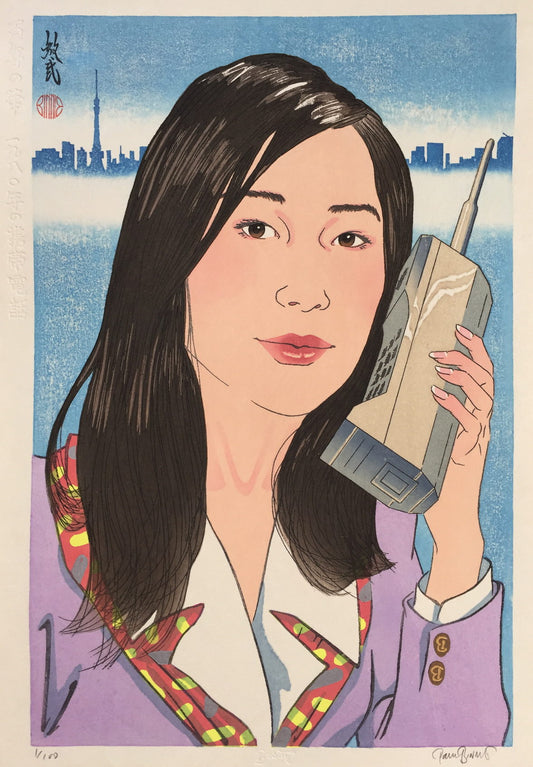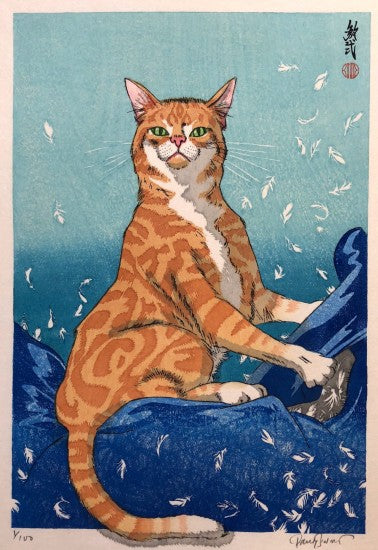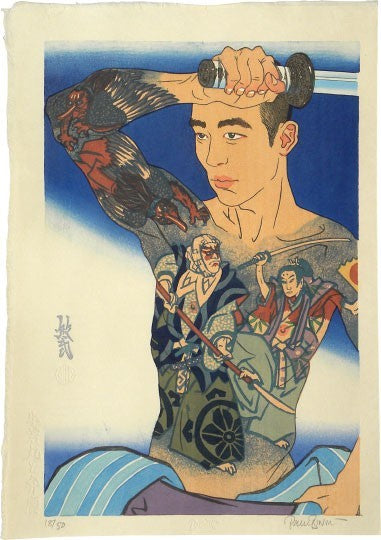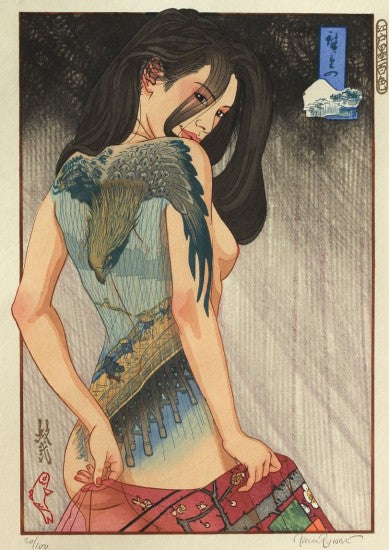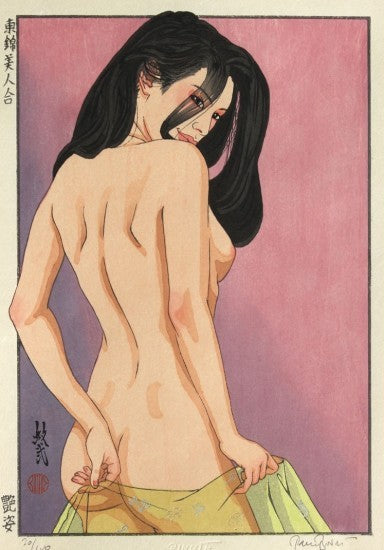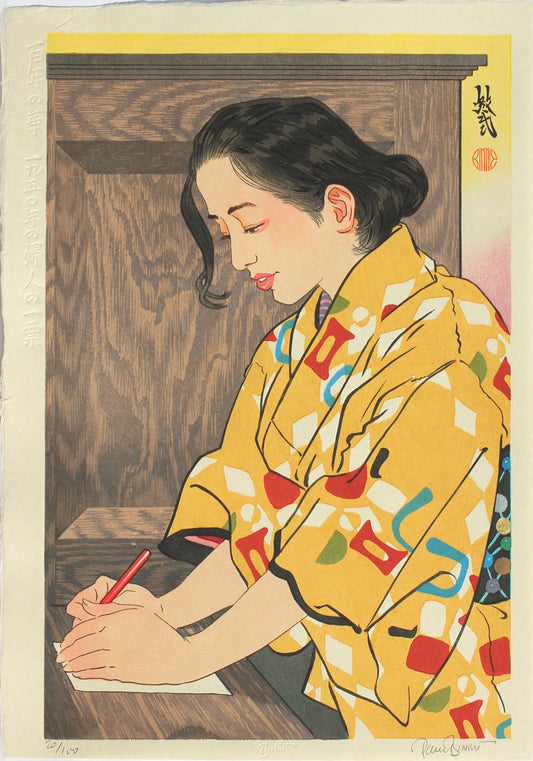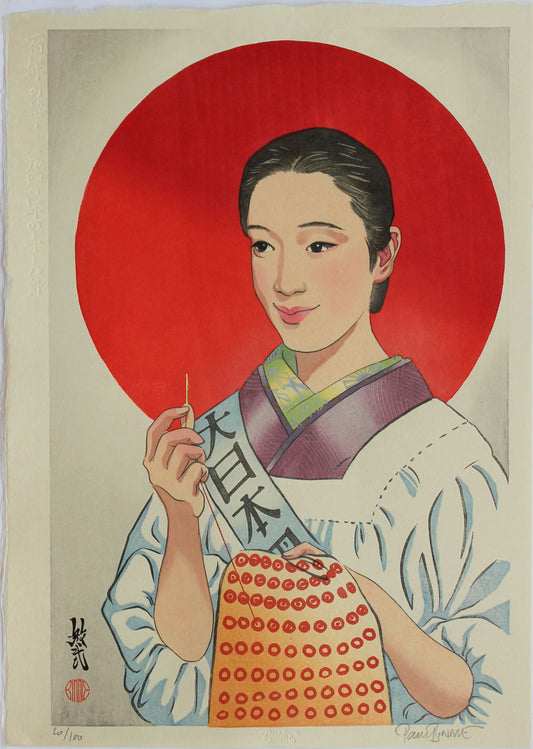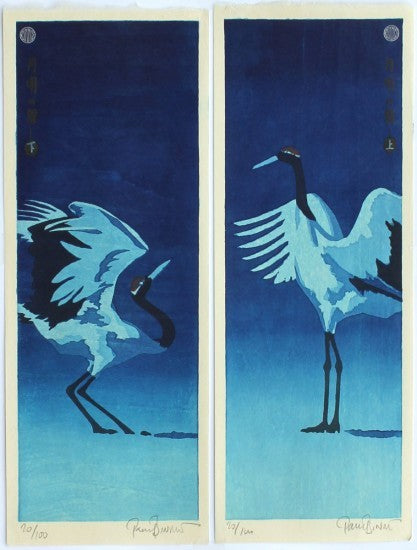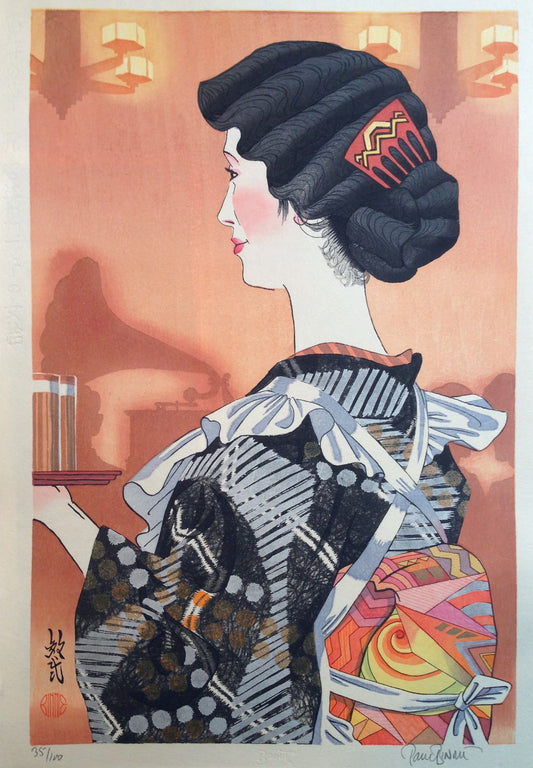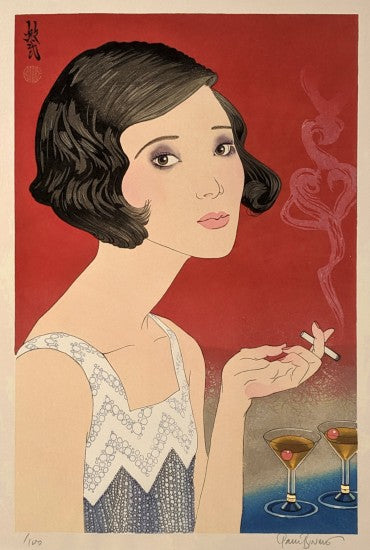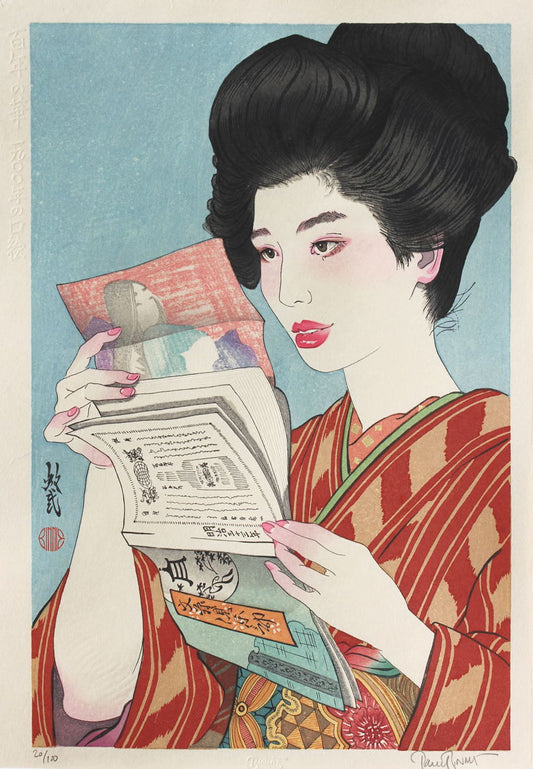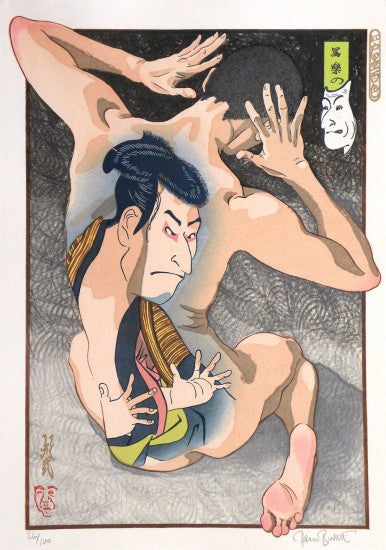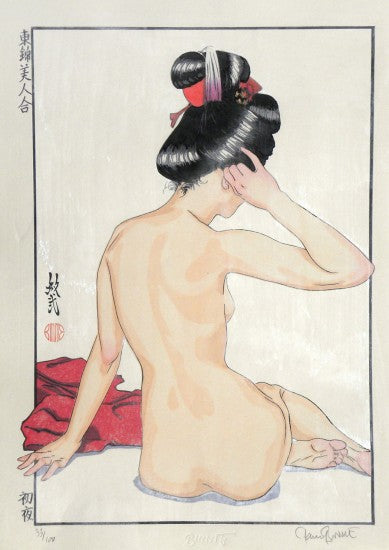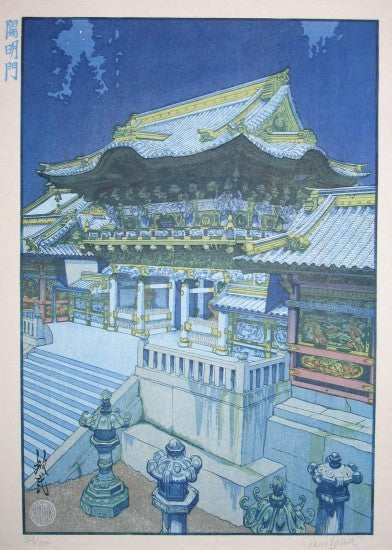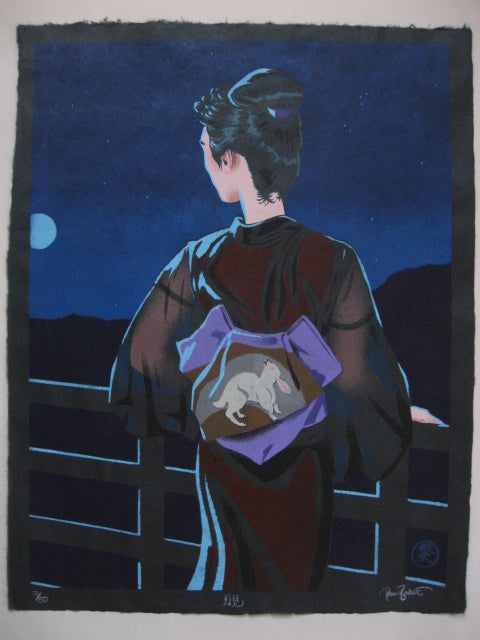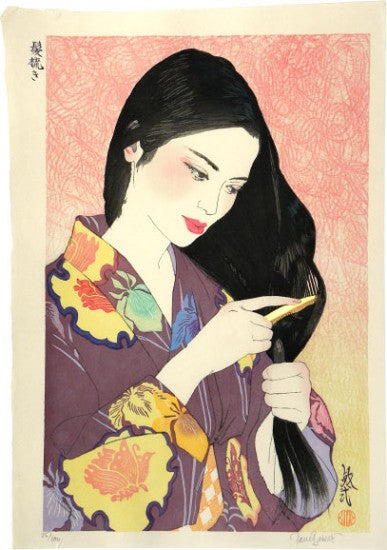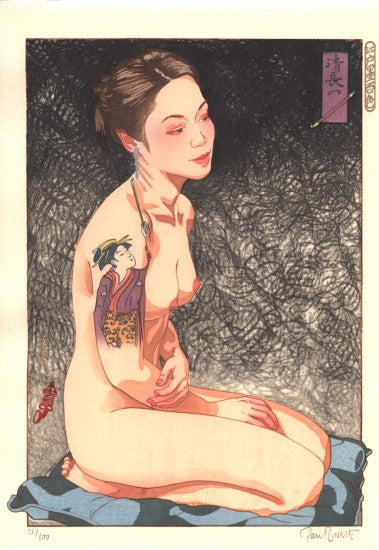Collection: Paul Binnie

About the Artist
Paul Binnie (b. 1967)
Paul Binnie was born in Alloa, Scotland in 1967 and studied fine art at the University of Edinburgh and Edinburgh College of Art, graduating with an M.A. (Hons) in 1990.
He lived in Paris from 1990 to early 1993, working both as a professional artist and as a teacher of art at the Ecole du Louvre and the Atelier Hourde.
His growing interest in Japanese woodblock prints led him to travel to Tokyo in 1993, where he lived until the end of 1998 in the pursuit of the skills and techniques of Japanese woodblock print making. Binnie had discovered Japanese prints of the Ukiyo-e school in his teens while a student at the University of Edinburgh and Edinburgh College of Art, and had begun to collect prints at that time, an enthusiasm which continues until now. Unable to enter the Yoshida studio, his first choice for training, due to the illness of Yoshida Toshi, he was advised to contact Seki Kenji. Kenji had been the head printer at Doi-Hangaten and Binnie worked with him for several years developing his own block printing style. He also made friends with woodblock artist Ralph Kiggell, who was studying at the Yoshida Studio at the time. There Paul Binnie met Toshi Yoshida, and made numerous visits to the Yoshida Studio to study the carving and printing procedures there.
In Tokyo. Paul Binnie lived in Sendagaya, a few streets away from the National Noh Theatre. He became absolutely fascinated by both Noh and Kabuki, and like 18th and 19th century Japanese woodblock artists he started making sketches of Kabuki and Noh actors behind the scenes. These sketches were used both for his subsequent print designs and for a vast array of oil paintings.
Binnie is currently working on a large series of prints, Nihon Meisho Zu-e (Famous Views of Japan) and these are released every few months when they are completed, adding to the earlier landscapes, such as the series Shitamachi Settsugekka (Snow, Moon and Flowers of Downtown Tokyo), which he produced in Japan. He was also interested in tattoos, and has designed numerous prints of this subject, in both woodblock and Kappaban stencil, which have proved very popular with a western audience. He is one of the few contemporary artists to successfully use this technique. His ongoing series Edo Sumi Hayaku Shoku (A Hundred Shades of Ink of Edo) has many enthusiastic collectors. A recent focus for him is bijin-ga, or prints of beautiful women, which have become a new theme in his work, with one series, Shiki (Four Seasons) completed in Spring 2005, a second, Azuma Nishiki Bijin Awase (A Collection of Eastern Brocade Beauties) is added to periodically and a third, Hyakunen no Hana (Flowers of a Hundred Years).
Binnie is one of the few foreign artists to combine the skills of designer, block-cutter and printer, all of which in the past were specialist jobs performed by individuals. He has two distinct styles; the “Shin hanga” finesse style which is influenced by Ukiyo-e, Natori Shunsen, Ota Gako and artists of the Taishõ period and the “Sõsaku hanga”, or creative print style, where the design is worked out directly on the block. Binnie uses kappaban, or stencil printing, when he wishes to exploit effects of shading and opaque tones of color, often on a black Japanese paper, with small editions and painterly applications of ink. The technique was originally developed in Kyoto, the kimono making centre of Japan, as a method for dying silk but has been used by numerous Japanese print artists of the twentieth century as a low-tech fore-runner of silk screen printing.
Binnie has exhibited widely in such places as Tokyo, Paris, New York, London, Hong Kong, Sweden, Scotland and the Netherlands.
Paul Binnie moved to the U.S in 2020 where he currently resides.
-
"Tears (red-bronze variant)" Namida
Vendor:Paul BinnieRegular price $950Regular priceUnit price / per -
"Bubble Era of 1990" Baburu jidal
Vendor:Paul BinnieRegular price $1,100Regular priceUnit price / per -
“Kabukicho”
Vendor:Paul BinnieRegular price $1,050Regular priceUnit price / per -
"A Mobile/Cell Phone of 1980 / 1980 Nen no Keitai Denwa"
Vendor:Paul BinnieRegular price $1,050Regular priceUnit price / per -
"Contact Lens, 2017 / 1970 Nen no Kontakuto Renz"
Vendor:Paul BinnieRegular price $1,050Regular priceUnit price / per -
“Cat Feathers: Blue”
Vendor:Paul BinnieRegular price $370Regular priceUnit price / per -
“Cat Feathers: Red”
Vendor:Paul BinnieRegular price $370Regular priceUnit price / per -
"Ushiwakamaru and Benkei" Ushiwakamaru to Benkei
Vendor:Paul BinnieRegular price $650Regular priceUnit price / per -
"Tokyo Night" Tokyo no Yoru
Vendor:Paul BinnieRegular price $350Regular priceUnit price / per -
"Hiroshige's Edo" Hiroshige no Edo’
Vendor:Paul BinnieRegular price $700Regular priceUnit price / per -
"Alluring Figure" Adesugata
Vendor:Paul BinnieRegular price $925Regular priceUnit price / per -
"Fujin no Ippyó / Votes for Women"
Vendor:Paul BinnieRegular price $1,050Regular priceUnit price / per -
"Senninbari / A Thousand Stitch Belt"
Vendor:Paul BinnieRegular price $1,050Regular priceUnit price / per -
“Getsumei (Moonlight Dance)”
Vendor:Paul BinnieRegular price $650Regular priceUnit price / per -
"Senkyuhyaku Sanjúnen no Kafé no Jokyú / A Café Waitress of 1930"
Vendor:Paul BinnieRegular price $1,050Regular priceUnit price / per -
"A Modern Girl of 1920" Senkyuhakunijuunen no Moga
Vendor:Paul BinnieRegular price $1,100Regular priceUnit price / per -
"Senkyuhyaku-nen no Kuchi-e / A Frontispiece Illustration of 1900"
Vendor:Paul BinnieRegular price $1,050Regular priceUnit price / per -
"Dawn & Dusk" Ake & Yoi
Vendor:Paul BinnieRegular price $700Regular priceUnit price / per -
"Sharaku's Caricatures" Sharaku no Giga
Vendor:Paul BinnieRegular price $650Regular priceUnit price / per -
"First Night" Shoya
Vendor:Paul BinnieRegular price $950Regular priceUnit price / per -
“Yomeimon”
Vendor:Paul BinnieRegular price $625Regular priceUnit price / per -
"Moon Viewing / Tsukimi"
Vendor:Paul BinnieRegular price $950Regular priceUnit price / per -
"Hair Combing" Kamisuki
Vendor:Paul BinnieRegular price $1,050Regular priceUnit price / per -
"Kiyonaga's Pipe" Kiyonaga no Kiseru
Vendor:Paul BinnieRegular price $650Regular priceUnit price / per
